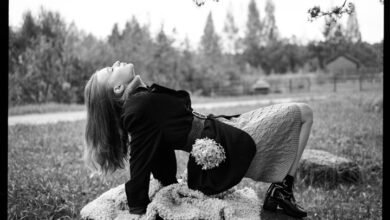Timeless European Fashion: Iconic Styles Across the Ages

Timeless European fashion serves as a mirror to its cultural history, reflecting the values and aspirations of each era. The Renaissance introduced opulence through rich fabrics and elaborate designs, while the Victorian period emphasized modesty and structure. In contrast, the Roaring Twenties ushered in a bold, liberated aesthetic. Modern minimalism, with its focus on simplicity, continues to influence contemporary trends. Each of these styles not only defines a period but also raises questions about their lasting impact today.
The Renaissance: A Flourish of Opulence
The Renaissance period, marked by a resurgence of interest in art, culture, and humanism, profoundly influenced European fashion, leading to an era characterized by opulence and intricate design.
Renaissance fabrics such as silk and velvet were prevalent, often embellished with ornate accessories, including elaborate jewelry and embroidered garments.
This lavish aesthetic not only reflected individual status but also symbolized the era's embrace of human creativity and expression.
The Victorian Era: Modesty Meets Elegance
Although often associated with strict social norms and conservatism, the Victorian Era (1837-1901) also ushered in a time of remarkable fashion evolution, where modesty seamlessly intertwined with elegance.
Characterized by intricate Victorian silhouettes, garments emphasized a cinched waist through various corset styles, enhancing femininity while maintaining decorum.
This blend of restraint and sophistication reflected the era's complex social dynamics and evolving notions of womanhood.
The Roaring Twenties: A Revolution in Style
As social norms began to shift dramatically in the aftermath of World War I, the Roaring Twenties emerged as a defining era of fashion innovation and cultural liberation.
Characterized by flapper dresses that symbolized female empowerment, this period was heavily influenced by jazz, reflecting a vibrant lifestyle.
The bold styles and carefree attitudes encapsulated a society eager to embrace new freedoms and challenge traditional constraints.
Modern Minimalism: The Rise of Effortless Chic
Emerging as a counterpoint to the excesses of previous decades, modern minimalism in fashion emphasizes simplicity and functionality while retaining an air of sophistication.
This movement aligns with sustainable fashion principles, promoting quality over quantity. The capsule wardrobe concept encapsulates this ethos, encouraging versatile, timeless pieces that allow for personal expression while minimizing environmental impact.
This reflects a desire for both freedom and responsibility in style choices.
Conclusion
Timeless European fashion serves as a mirror reflecting the societal transformations and cultural narratives of its eras. Each period, from the opulent Renaissance to the streamlined modern minimalism, reveals the adage "fashion is fleeting, but style endures." This enduring nature of style underscores how historical influences continue to shape contemporary aesthetics, proving that while trends may come and go, the essence of fashion remains rooted in the rich heritage of individual expression and collective memory.




